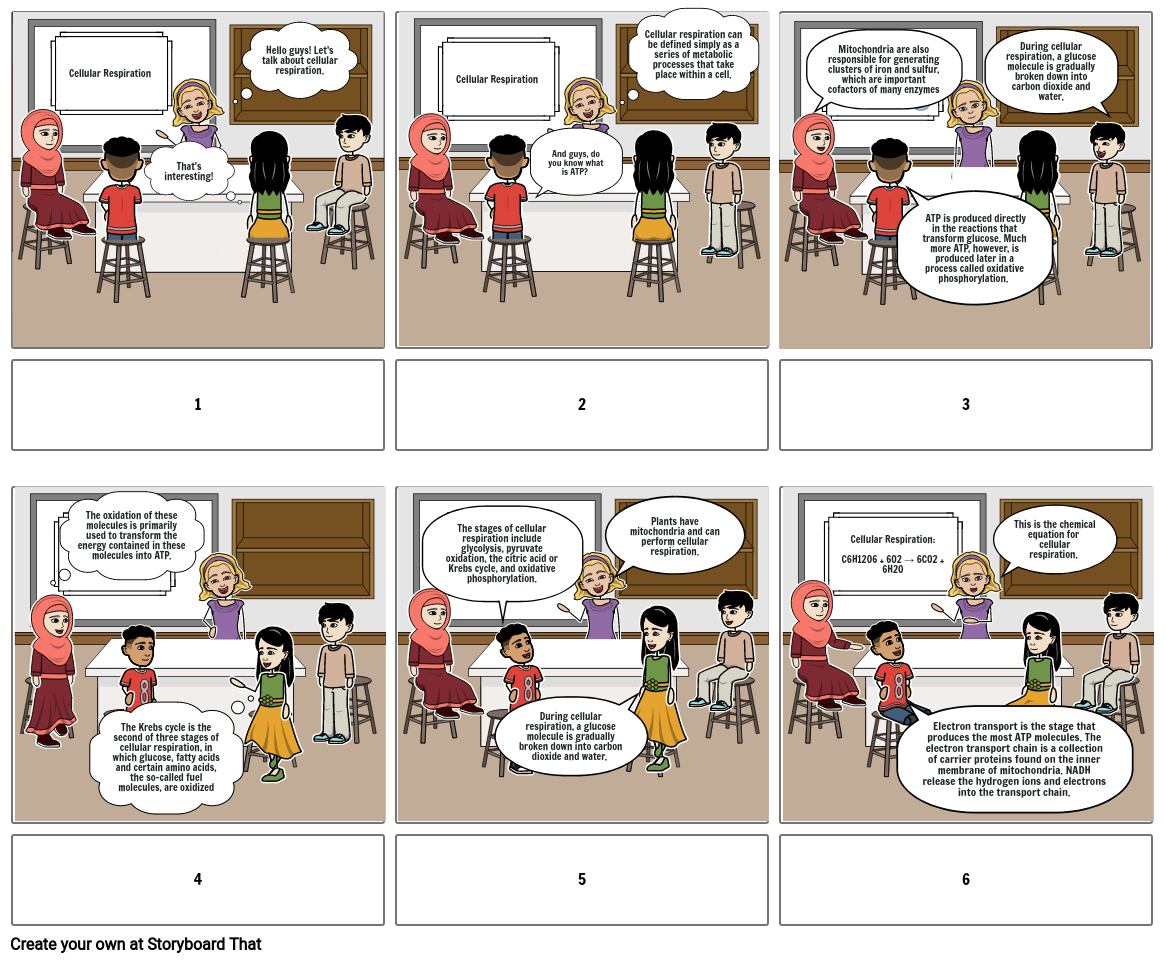Cellular respiration

Storyboard Text
- Cellular Respiration
- That's interesting!
- Hello guys! Let's talk about cellular respiration.
- Cellular Respiration
- And guys, do you know what is ATP?
- Cellular respiration can be defined simply as a series of metabolic processes that take place within a cell.
- Mitochondria are also responsible for generating clusters of iron and sulfur, which are important cofactors of many enzymes
- Cellular Respiration
- ATP is produced directly in the reactions that transform glucose. Much more ATP, however, is produced later in a process called oxidative phosphorylation.
- During cellular respiration, a glucose molecule is gradually broken down into carbon dioxide and water.
- 1
- The oxidation of these molecules is primarily used to transform the energy contained in these molecules into ATP.
- Cellular Respiration
- The Krebs cycle is the second of three stages of cellular respiration, in which glucose, fatty acids and certain amino acids, the so-called fuel molecules, are oxidized
- 2
- The stages of cellular respiration include glycolysis, pyruvate oxidation, the citric acid or Krebs cycle, and oxidative phosphorylation.
- Cellular Respiration
- During cellular respiration, a glucose molecule is gradually broken down into carbon dioxide and water.
- Plants have mitochondria and can perform cellular respiration.
- 3
- Cellular Respiration: C6H12O6 + 6O2 → 6CO2 + 6H2O
- This is the chemical equation for cellular respiration.
- 4
- 5
- 6
- Electron transport is the stage that produces the most ATP molecules. The electron transport chain is a collection of carrier proteins found on the inner membrane of mitochondria. NADH release the hydrogen ions and electrons into the transport chain.
Over 30 Million Storyboards Created
No Downloads, No Credit Card, and No Login Needed to Try!


